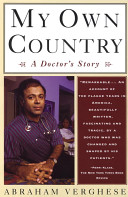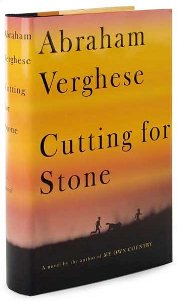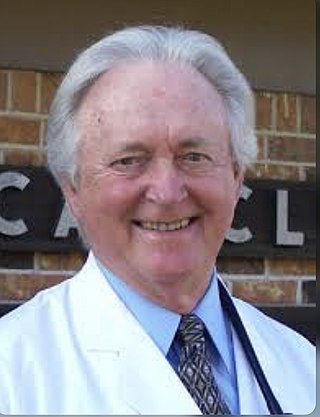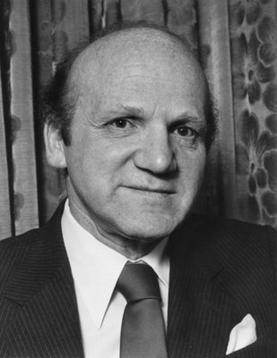The National Academy of Medicine (NAM), known as the Institute of Medicine (IoM) until 2015, is an American nonprofit, non-governmental organization. The National Academy of Medicine is a part of the National Academies of Sciences, Engineering, and Medicine, along with the National Academy of Sciences (NAS), National Academy of Engineering (NAE), and the National Research Council (NRC).

Madras Medical College (MMC) is a public medical college located in Chennai, Tamil Nadu, India. Established in 1835, it is one of the oldest medical colleges in India, as well as in Asia.

Allen Richard Selzer was an American surgeon and author.

William Henry Welch was an American physician, pathologist, bacteriologist, and medical-school administrator. He was one of the "Big Four" founding professors at the Johns Hopkins Hospital. He was the first dean of the Johns Hopkins School of Medicine and was also the founder of the Johns Hopkins School of Hygiene and Public Health, the first school of public health in the country. Welch was more known for his cogent summations of current scientific work, than his own scientific research. The Johns Hopkins medical school library is also named after Welch. In his lifetime, he was called the "Dean of American Medicine" and received various awards and honors throughout his lifetime and posthumously.
Rafael Campo is an American poet, doctor, and author.
Edward ("Ted") Hance Shortliffe is a Canadian-born American biomedical informatician, physician, and computer scientist. Shortliffe is a pioneer in the use of artificial intelligence in medicine. He was the principal developer of the clinical expert system MYCIN, one of the first rule-based artificial intelligence expert systems, which obtained clinical data interactively from a physician user and was used to diagnose and recommend treatment for severe infections. While never used in practice, its performance was shown to be comparable to and sometimes more accurate than that of Stanford infectious disease faculty. This spurred the development of a wide range of activity in the development of rule-based expert systems, knowledge representation, belief nets and other areas, and its design greatly influenced the subsequent development of computing in medicine.
The doctor–patient relationship is a central part of health care and the practice of medicine. A doctor–patient relationship is formed when a doctor attends to a patient's medical needs and is usually through consent. This relationship is built on trust, respect, communication, and a common understanding of both the doctor and patients' sides. The trust aspect of this relationship goes is mutual: the doctor trusts the patient to reveal any information that may be relevant to the case, and in turn, the patient trusts the doctor to respect their privacy and not disclose this information to outside parties.

Narrative Medicine is the discipline of applying the skills used in analyzing literature to interviewing patients. The premise of narrative medicine is that how a patient speaks about his or her illness or complaint is analogous to how literature offers a plot with characters and is filled with metaphors, and that becoming conversant with the elements of literature facilitates understanding the stories that patients bring. Narrative Medicine is a diagnostic and comprehensive approach that utilizes patients' narratives in clinical practice, research, and education to promote healing. Beyond attempts to reach accurate diagnoses, it aims to address the relational and psychological dimensions that occur in tandem with physical illness. Narrative medicine aims not only to validate the experience of the patient, it also encourages creativity and self-reflection in the physician.
Physician writers are physicians who write creatively in fields outside their practice of medicine.

My Own Country: A Doctor's Story is Abraham Verghese's first book. First published in 1994, it made that year's New York Times Notable Book list. It is used in colleges and medical schools throughout North America and across the world because of the way it communicates the sense of empathy and compassion so often missing in medical school education in an era of high technology and reliance on computers as primary diagnostic tools.

Robert M. "Bob" Wachter is an academic physician and author. He is on the faculty of University of California, San Francisco, where he is chairman of the Department of Medicine, the Lynne and Marc Benioff Endowed Chair in Hospital Medicine, and the Holly Smith Distinguished Professor in Science and Medicine. He is generally regarded as the academic leader of the hospitalist movement, the fastest growing specialty in the history of modern medicine. He and a colleague, Lee Goldman, are known for coining the term "hospitalist" in a 1996 New England Journal of Medicine article.

Cutting for Stone (2009) is a novel written by Ethiopian-born Indian-American medical doctor and author Abraham Verghese. It is a saga of twin brothers, orphaned by their mother's death at their births and forsaken by their father. The book includes both a deep description of medical procedures and an exploration of the human side of medical practices.

John Haynes Jr. was a rural family physician and surgeon, and community leader of Northwest Louisiana and Northeast Texas. Haynes is known for being chosen as the first Country Doctor of the Year in 1993 in recognition of his outstanding contributions to rural health care. Haynes died June 7, 2021, after a long battle with cardiovascular disease.

Sir Abraham Goldberg was a British physician who was a Regius Professor of the Practice of Medicine at the University of Glasgow. He was educated at George Heriot's School in Edinburgh and the University of Edinburgh.

Mark Siegler is an American physician who specializes in internal medicine. He is the Lindy Bergman Distinguished Service Professor of Medicine and Surgery at the University of Chicago. He is the Founding Director of Chicago's MacLean Center for Clinical Medical Ethics. Siegler has practiced and taught internal medicine at the University of Chicago for more than 50 years.

Richard Philip Usatine is a physician, photographer, writer, speaker, and professor of family and community medicine, dermatology and cutaneous surgery. He is Assistant Director of Medical Humanities Education at the University of Texas Health Science Center at San Antonio.

Mary Puthisseril Verghese (1925–1986) was a physician in India who was among the earliest pioneers of Physical medicine and rehabilitation in the country. Mary Verghese was instilled in a home where love and respect were two main factors in their close knit family. She was caring of others and wanted to give back to her community in any way that she could. In 1963, she took charge of what was the first department of Physical Medicine and Rehabilitation with an inpatient facility in India at the Christian Medical College, Vellore. She was instrumental in expanding the services of the department with the establishment of the first inpatient rehabilitation institute of the country in 1966. In recognition of her contributions to the field of medicine, she was awarded the Padma Shri by the Government of India in 1972.
Gurumukh Sajanmal Sainani is an Indian general physician, medical researcher, medical writer and an Emeritus Professor of the National Academy of Medical Sciences. He is a former director of the All India Heart Foundation and the incumbent director of Jaslok Hospital, Mumbai. He is a recipient of the highest Indian award in the medical category, Dr. B. C. Roy Award, from the Medical Council of India and the rank of Honorary Brigadier from the President of India. The Government of India awarded him the fourth highest civilian award of the Padma Shri in 2000.

When Breath Becomes Air is a non-fiction autobiographical book written by American neurosurgeon Paul Kalanithi. It is a memoir about his life and battling stage IV metastatic lung cancer. It was posthumously published by Random House on January 12, 2016.

Andrew Elder is a consultant physician in acute medicine for older people, and former medical director of MRCP(UK). He is the current President of the Royal College of Physicians of Edinburgh.














